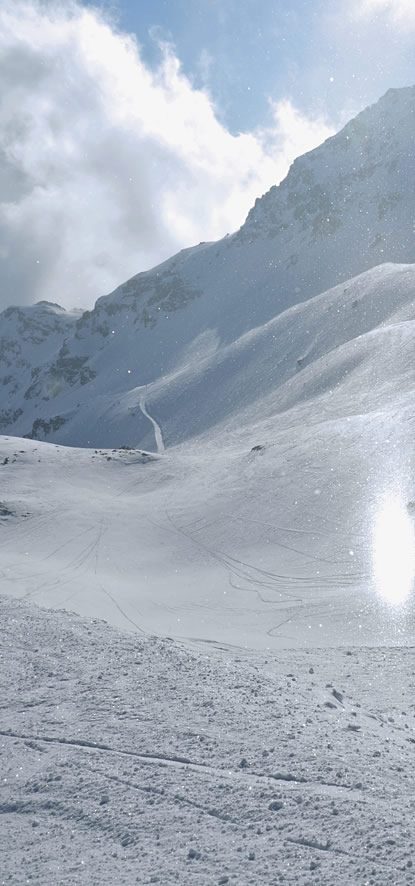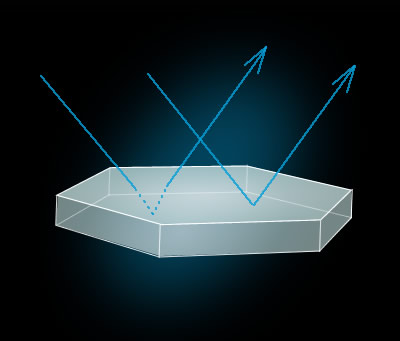
Diamond Dust Subsun Wim van Zanten took this video of a twinkling subsun on a ski slope at Orelle Les Trois Vall�es, France. A wider angle still image is below "It was a beautiful sight but difficult to capture. Through my polarizing ski-glasses it looked even more intense. The temperature was -15 Celsius. It was an intense twinkling of the ice-crystals 3 feet above the ground visible only between the observer and the sun." While watching these myriad spots of light swirling, dancing and flashing in the nearby air it is hard not to imagine that the glints are from tumbling and rotating snowflake-like crystals. The opposite is true, facets of well aligned hexagonal plate crystals are reflecting the sun's light towards the eye and camera. Each plate is drifting slowly downwards relative to its local and rather chaotic air current. Its relative downward motion induces aerodynamic drag that keeps the crystal aligned so that its large hexagonal faces are horizontal to within a degree or so. Sunlight reflects externally from the exposed upper face or internally from the lower one. Collectively the host of crystals act as a large mirror that forms an intense sun image the same distance below the horizon as the sun above it. Wim's subsun, like most, is vertically elongated because the crystals have a slight wobble from a perfect horizontal alignment. Large crystals wobble more and make a sun pillar rather than a subsun. There is a fainter sun pillar in Wim's video and the image below. |

| About - Submit | Optics Picture of the Day | Galleries | Previous | Next | Today |
 |
 |
|
 |